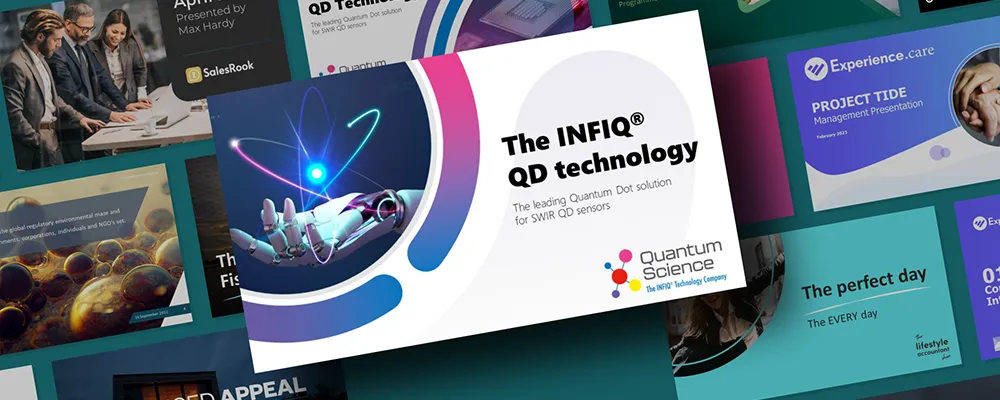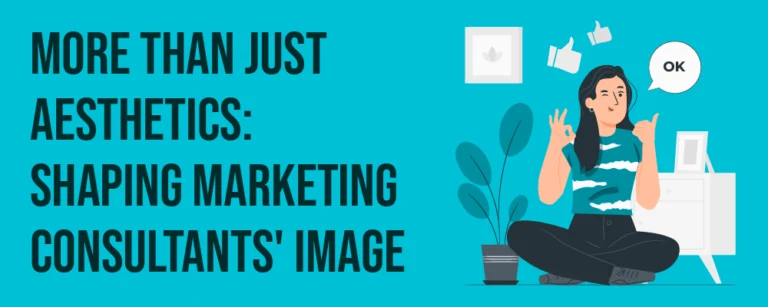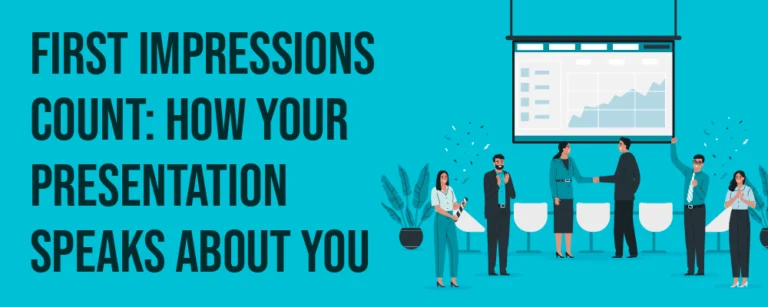
Table of Contents
In the world of consulting, effective presentations are crucial for standing out and making an impact on clients. Consultants often find themselves in meetings that feel all too familiar, where uniformity reigns and ideas fail to resonate. However, with the right strategies, consultants can break free from these patterns and create presentations that truly stand out. This article will explore the key factors that can make a difference in a consultant’s presentation, including packaging, branding, professionalism, visuals, layout, storytelling, and time management. We will also discuss the importance of having a reliable partner to support the consultant’s efforts.
The All-Too Familiar Scenario: Uniformity in Meetings
Consultants are no strangers to meetings that lack excitement and fail to engage clients. Too often, presentations follow a formulaic structure, with similar slides and patterns. While this may seem safe and comfortable, it can also lead to a lack of impact. Clients are more likely to remember presentations that stand out from the crowd and offer a fresh perspective. By breaking free from uniformity, consultants can differentiate themselves and leave a lasting impression.
Instead of relying on the same old slide templates, consider exploring new formats and layouts. By incorporating innovative design elements and creative visuals, consultants can capture their clients’ attention and keep them engaged throughout the presentation.
One way to add a touch of uniqueness to presentations is by incorporating interactive elements. Imagine a presentation where clients can actively participate and have a hands-on experience. This could be achieved through the use of interactive polls, quizzes, or even virtual reality simulations. By allowing clients to engage with the content in a more dynamic way, consultants can create a memorable and immersive experience.
Another approach to breaking free from uniformity is by incorporating storytelling techniques into presentations. Instead of simply presenting facts and figures, consultants can weave a narrative that captivates their audience. By using personal anecdotes, case studies, or even fictional scenarios, consultants can create an emotional connection with their clients. This not only makes the presentation more engaging but also helps clients relate the information to their own experiences.
Furthermore, consultants can enhance their presentations by incorporating multimedia elements. Instead of relying solely on text and static images, consider integrating videos, animations, or audio clips. These multimedia elements can help bring the content to life and make it more memorable. For example, a short video testimonial from a satisfied client can add credibility and impact to a presentation.
Additionally, consultants can take advantage of technology to deliver more interactive and engaging presentations. Instead of relying on traditional slide decks, consider using interactive presentation tools that allow for seamless transitions, embedded multimedia, and real-time collaboration. This not only makes the presentation more visually appealing but also encourages active participation from clients.
Lastly, consultants can consider incorporating gamification elements into their presentations. By turning the presentation into a game or competition, consultants can create a sense of excitement and friendly rivalry among team members. This can be achieved through interactive quizzes, challenges, or even team-based activities. By gamifying the presentation, consultants can make it more enjoyable and memorable for their clients.
Breaking free from uniformity in presentations is crucial for consultants to leave a lasting impression on their clients. By exploring new formats, incorporating interactive elements, using storytelling techniques, integrating multimedia, leveraging technology, and incorporating gamification, consultants can create engaging and memorable presentations that stand out from the crowd. So, the next time you prepare for a meeting, dare to be different and unleash your creativity to captivate your audience.

Your Ideas Aren't the Problem: Why Presentations Fail
When presentations fail to make an impact, it’s often not because of the ideas themselves but rather how they are conveyed. Consultants may have brilliant insights and strategies, but if they fail to communicate effectively, their ideas will fall on deaf ears. It’s essential to pay attention to the delivery of the presentation, ensuring that the message is clear, concise, and compelling.
To overcome this challenge, consultants should focus on crafting a persuasive narrative that guides the audience through the presentation. This can be achieved by structuring the content in a logical and coherent manner, using storytelling techniques to keep the audience engaged. A well-structured presentation will not only captivate clients but also make it easier for them to understand and remember the key points being conveyed.
One effective way to structure a presentation is to begin with a compelling introduction that grabs the audience’s attention. This could be a thought-provoking question, an intriguing anecdote, or a startling statistic. By starting off strong, consultants can immediately capture the audience’s interest and set the stage for the rest of the presentation.
After the introduction, consultants should provide a clear agenda or outline of what will be covered in the presentation. This helps the audience understand the structure of the presentation and what to expect. It also allows them to mentally prepare and follow along more easily.
Next, consultants should dive into the main content of the presentation, providing thorough explanations and supporting evidence for their ideas. This is where the storytelling techniques come into play. Consultants can use real-life examples, case studies, or personal experiences to make their points more relatable and engaging. By connecting with the audience on an emotional level, consultants can increase the impact of their ideas.
Throughout the presentation, it’s important to use visual aids such as slides, charts, or diagrams to enhance understanding and retention. Visuals can help break up the text-heavy content and provide a visual representation of complex concepts. However, it’s crucial to strike a balance and not overload the presentation with too many visuals, as it can distract the audience from the main message.
In addition to the content itself, consultants should also pay attention to their delivery style. This includes factors such as body language, tone of voice, and pace of speech. Consultants should strive to maintain a confident and engaging presence, making eye contact with the audience and using gestures to emphasize key points. A dynamic and enthusiastic delivery can greatly enhance the impact of the presentation.
Lastly, consultants should conclude the presentation with a strong and memorable ending. This could be a summary of the main points, a call to action, or a thought-provoking statement. The ending should leave a lasting impression on the audience, ensuring that they remember the key takeaways from the presentation.
While the ideas themselves are important, the success of a presentation ultimately depends on how those ideas are conveyed. By focusing on the delivery, structure, storytelling, visuals, and delivery style, consultants can create impactful presentations that captivate the audience and leave a lasting impression.

Packaging Matters: How Your Presentation Supports Your Message
The packaging of a presentation plays a significant role in how the message is perceived. It’s not just about the content; it’s about how that content is presented. Consultants should pay attention to the design elements, ensuring that they align with the overall message and brand identity. A visually appealing presentation can enhance credibility and give clients confidence in the consultant’s expertise.
In today’s fast-paced business world, where attention spans are shorter than ever, it is crucial for consultants to captivate their audience from the moment they step into the room. The use of compelling visuals, such as high-quality images, charts, and graphs, can help convey complex information in a clear and concise manner. By incorporating visually stimulating elements, consultants can create a memorable experience for their clients, leaving a lasting impression.
However, aesthetics alone are not enough to make a presentation truly impactful. Consultants should also consider the format of their presentation. Depending on the context and the clients’ preferences, it may be more effective to use a slide deck, a video presentation, or even an interactive demonstration. Slide decks are a popular choice for many consultants, as they provide a structured and organized way to present information. With the ability to customize layouts, fonts, and colors, consultants can create a cohesive visual narrative that supports their key messages. Additionally, slide decks allow for easy navigation and reference, enabling clients to revisit specific slides or concepts at their own pace.
Video presentations, on the other hand, offer a dynamic and engaging way to deliver a message. Consultants can leverage the power of storytelling, combining visuals, audio, and motion to create an immersive experience for their audience. Through the use of professional editing and production techniques, consultants can craft a polished and impactful video that leaves a lasting impression.
For a more hands-on approach, consultants may opt for an interactive demonstration. This format allows clients to actively participate in the presentation, fostering a sense of engagement and collaboration. By providing opportunities for clients to ask questions, explore different scenarios, or interact with prototypes, consultants can create a personalized experience that resonates with their audience.
Ultimately, the format of a presentation should be chosen strategically to best support the message and engage the audience. Consultants should consider the nature of the content, the preferences of their clients, and the desired outcome of the presentation. By carefully crafting the packaging of their presentation, consultants can ensure that their message is not only heard but also understood and remembered.
Brand Identity in the Presentation: A Must for Consultants
As consultants, your brand identity is a valuable asset that can set you apart from the competition. Integrating your brand identity into your presentation can help reinforce your unique value proposition and create a sense of consistency across your marketing materials. By maintaining a consistent visual style, tone of voice, and messaging, consultants can establish a strong brand presence and build trust with their clients.
Visual elements such as colors, fonts, and logos can be used to reinforce the brand identity within the presentation. For example, choosing a color palette that aligns with your brand’s personality can evoke specific emotions and create a memorable visual experience for your audience. Similarly, selecting fonts that reflect your brand’s tone can enhance the overall cohesiveness of your presentation.
In addition to visual elements, consultants can incorporate their unique selling points and company values into the content. By showcasing your expertise and highlighting what sets you apart from other consultants, you can establish yourself as a trusted authority in your field. This can be done through compelling storytelling, case studies, or testimonials that demonstrate the positive impact you have had on your clients’ businesses.
Furthermore, consultants can leverage their brand’s messaging to create a consistent narrative throughout the presentation. By aligning your content with your brand’s mission, vision, and values, you can reinforce your brand identity and connect with your audience on a deeper level. This can be achieved by incorporating key messages, taglines, or brand stories that resonate with your target market.
Another important aspect of integrating brand identity into presentations is ensuring that the overall design reflects your brand’s personality and style. This includes elements such as layout, graphics, and imagery. By using design elements that are consistent with your brand’s visual identity, you can create a cohesive and visually appealing presentation that leaves a lasting impression on your audience.
Moreover, consultants can consider incorporating interactive elements into their presentations to further engage their audience. This can include interactive charts, infographics, or multimedia content that not only convey information but also provide an interactive and immersive experience for the viewers. By incorporating these elements, consultants can demonstrate their innovative approach and showcase their ability to deliver dynamic and engaging presentations.
Integrating brand identity into presentations is crucial for consultants to establish a strong brand presence, build trust with clients, and differentiate themselves from the competition. By incorporating visual elements, unique selling points, company values, consistent messaging, and thoughtful design, consultants can create impactful presentations that leave a lasting impression on their audience.

Professionalism in Every Detail: What Makes a First-Class Presentation
A first-class presentation not only demonstrates expertise but also showcases professionalism in every detail. Attention to detail can make a significant difference in how clients perceive a consultant’s work ethic and attention to their needs. This includes aspects such as grammar and spelling, consistent formatting, and accurate data.
To ensure professionalism, consultants should thoroughly proofread their presentations, seeking feedback from colleagues or mentors if necessary. Investing time in refining the details will not only elevate the quality of the presentation but also contribute to the overall impression of professionalism and trustworthiness.
Visual Power That Inspires: The Use of Impressive Images
Visuals are a powerful tool for conveying messages and evoke emotions. Including impressive images in presentations can make a lasting impact on clients. However, it’s essential to choose images that are relevant to the subject matter and support the key points being made.
Consultants can source high-quality images from various stock photo websites or consider investing in professional photography specific to their industry. By using visually stunning images that are aligned with the presentation’s content, consultants can captivate their clients and create a memorable experience.
Uniqueness through Layout: Design Tips for Convincing Presentations
The layout of a presentation can affect its persuasiveness. While traditional bullet-point lists are functional, they may not be the most engaging format. Consultants should consider exploring alternative layouts, such as visual diagrams, flowcharts, or even interactive slides.
By employing innovative design techniques, consultants can create a unique and visually appealing presentation that captures the attention of their clients. Breaking away from the expected layout norms can help bring clarity to complex ideas and increase the overall impact of the presentation.
The Art of Coherent Storytelling: How to Structure Your Storyline
The Art of Coherent Storytelling: How to Structure Your Storyline
Effective storytelling is a crucial skill for consultants to master. A well-structured storyline can make a presentation more relatable and engaging for the audience. Consultants should aim to create a narrative arc that guides the audience through the presentation, starting with a compelling introduction, building up to the main points, and concluding with a strong call to action.
It’s important to connect the different sections of the presentation seamlessly, ensuring that each point supports the overall story being told. Consultants can use techniques such as anecdotes, case studies, or even personal experiences to illustrate their points and make them more relatable to the audience.

Time is Money: Quick Solutions for Effective Presentatio
In the consulting world, time is a precious resource. Consultants often have limited time to present their ideas and make an impact on clients. It’s crucial to develop efficient strategies for creating and delivering effective presentations within tight time constraints.
One approach is to prioritize the key messages and main points, focusing on what is most relevant and impactful for the clients. Additionally, consultants can use visual aids, such as infographics or concise summaries, to convey information quickly and concisely.
The Partner by Your Side: When You Need More Than Just a Presentation
While a well-crafted presentation is a powerful tool, sometimes consultants need more than just slides to make a lasting impact on their clients. This is where having a reliable partner by your side can make a difference. Consultants can collaborate with experts in design, marketing, or technology to create interactive experiences, customized materials, or even digital platforms that support their presentations.
By leveraging the expertise of a partner, consultants can enhance the overall impact of their presentation and provide clients with a comprehensive solution tailored to their specific needs. A strong partnership can elevate the consultant’s work and open up new opportunities for success.
Consultants can stand out and make a lasting impact on their clients through effective presentations. By breaking free from uniformity, focusing on the delivery of ideas, paying attention to packaging and brand identity, demonstrating professionalism, using captivating visuals, employing unique layouts, storytelling strategically, managing time efficiently, and seeking partnerships when necessary, consultants can create presentations that truly stand out.
With these strategies in place, consultants will not only make a memorable impression but also provide added value to their clients.




